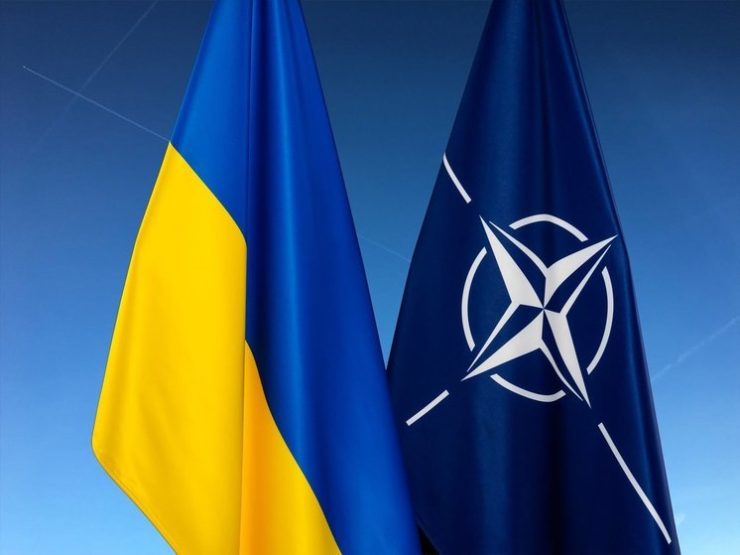
The decades-long humiliation that NATO suffered in Afghanistan ostensibly was not enough, as NATO is being exposed again in the Ukraine conflict.
The West and its veritable arm, the mainstream media, have been touting for over a year that the Russian forces are running out of munitions and are exhausted, but this is just not true. For proof, please read this article.
If it were not for NATO and the US, who have deliberately prolonged this conflict, Ukraine would already be on the negotiation table. Russia is fighting handicapped as it is not only in conflict with a NATO-supplied and trained Ukrainian army but also embattling an unprecedented sanctions war as well as a massive propaganda campaign that has completely obfuscated the truth. Despite these monolithic odds, Russia has shown its mettle to the Ukrainians, NATO, and the world.
The conflict currently has taken on attritional characteristics, and the victor will be the one that can outlast the other. Despite the raucous but faux shrieks of the West that Russia cannot sustain itself, we have seen that Russia is easily making more tanks, and missiles, repurposing Soviet-era munitions, and buying drones, etcetera. So, the question is: Can NATO and subsequently Ukraine sustain this conflict?
Reuters reported back in February 2023 that NATO is expected to ask members to raise its ammunition stockpile, which “have been badly depleted” by the conflict in Ukraine. This means that NATO stockpiles were under much duress for quite a while. In fact, this crisis was brewing even in 2022 with a NATO official remarking that “I think everyone is now sufficiently worried.” Ukraine’s armed forces are also to blame for this, as they have burned through NATO-supplied munitions too hastily. At one point, Kyiv was firing around 10,000 artillery shells daily. This has exposed NATO supply chains as well as Ukrainian strategy on the ground.
A European diplomat asserted that “If Europe were to fight Russia, some countries would run out of ammunition in days.” Even the highly biased Washington Post writes that “Western governments, in particular European ones, have failed to act fast enough to turn around their industrial policy to meet Ukraine’s growing needs for artillery ammunition, armored vehicles and other weaponry, military experts said.” Due to this, the US, France, UK have pressured arms companies to increase their supplies and have signed massive new contracts. Unfortunately, as far as numbers are concerned vis-à-vis ammunition stockpiles, it is difficult to ascertain as this information is highly classified.
What is not classified is the fact that Europe is scrambling – it recently announced to spend €500 million to boost EU defense industry capacities in ammunition production. These investments are already late, as Michael Koffman, a military analyst, remarks, “You don’t have to be a great military analyst to realize that European countries making major investments into artillery production 13 months into the war are a little bit late.” Other commentators have mirrored similar sentiments that there will be a massive delay between increasing munitions production and having more munitions in hand. Jake Sullivan, the National Security adviser, stated, “We discovered that the ability to mass produce that ammunition would take not days or weeks or months, but years, to get to the level that we needed.”
The UK is also investing an additional £2.5 billion into stockpiles and munitions. The US has provided Ukraine with over 2 million 155mm artillery rounds, according to the Pentagon. Despite augmented production of shells, the Ukrainians are still burning through more shells than are being provided to them. It is firing around 2000–3000 shells a day at Russian forces. The US became so desperate that Joe Biden approved sending cluster munitions, which many European allies have banned. However, as always, the US cannot be policed and this controversial move is just another footnote in the US’ long book of violence.
While deliberating on how harrowing the situation for Ukraine is, the Washington Post reports that the country is suffering from “basic shortages of ammunition, including artillery shells and mortar bombs, according to military personnel in the field.”
NATO has been supplying high-precision multiple-launch rocket systems, tanks, air defense equipment, artillery systems, and much more to Ukraine. US and Western official told CNN that “The dwindling supply of artillery ammunition has served as a wake-up call to NATO”. US officials stated that there is a classified set level of munitions that the US stores around the world, an emergency reserve, that the US does not want to touch. However, due to continually supplying Ukraine with 155mm ammunition (the NATO standard used for artillery rounds), the US is near the red line.
The Ukrainians are complaining that supplies are not reaching fast enough or the best equipment is being kept from them while the West finds itself unable to meet Ukraine’s untenable expectations. The Secretary General of NATO also remarked that “Ukraine is running out of ammunition. We should continue to support this state militarily as much as we can for this reason.” While expounding the situation on the ground, a senior Ukrainian official, cited the number of tanks promised by the West as more “symbolic” than anything. Others privately voiced cynicism that promised supplies would even reach the battlefield in time.
With regard to the counteroffensive, the same official stated, “I don’t believe in a big counteroffensive for us. I’d like to believe in it, but I’m looking at the resources and asking, ‘With what?’ Maybe we’ll have some localized breakthroughs.” This coupled with Russia’s immutable defenses has proven to be an arduous hurdle for the Ukrainians to surmount, with many Ukrainians perishing since the counteroffensive began. Many in Europe are now wondering if aiding Ukraine with all this military aid and equipment is worth it – especially when it comes at the expense of their own economies.
Taut Bataut – is a researcher and writer that publishes on South Asian geopolitics, exclusively for the online magazine “New Eastern Outlook”.